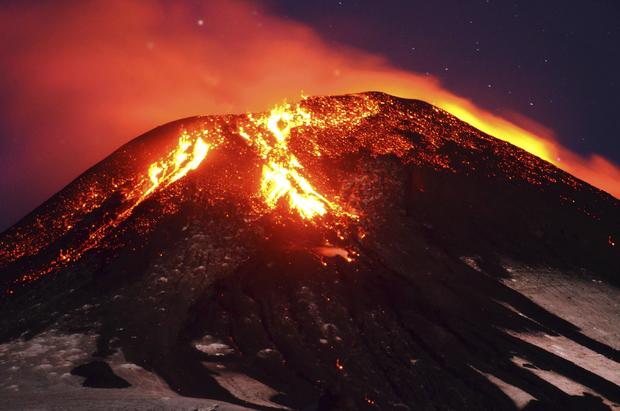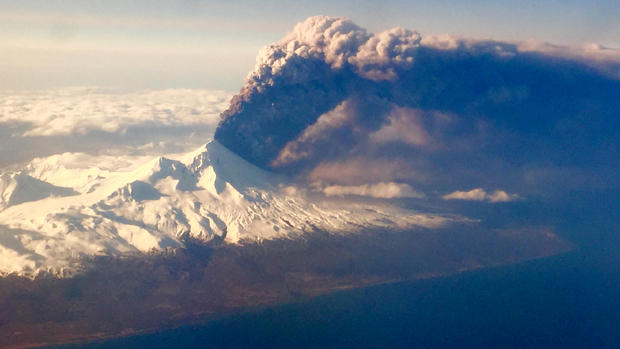Chile volcano erupts, shooting lava into the sky
PUCON, Chile -- One of South America's most active volcanoes erupted early Tuesday in southern Chile, spewing heavy smoke into the air as lava surged down its slopes, prompting authorities to evacuate thousands of people.
The Villarrica volcano erupted around 3 a.m. local time, according to the National Emergency Office, which issued a red alert and ordered evacuations. Local media showed images of the volcano bursting at the top, glowing in the dark amid heavy smoke and rivers of lava. Authorities worried that mudslides caused by melting snow could endanger nearby communities.
The 9,000 foot volcano in Chile's central valley, 400 miles south of Santiago, sits above the small city of Pucon, which has a population of about 22,000 people.
"It was the most amazing thing I've ever seen," 29-year-old Australian tourist Travis Armstrong said in a telephone interview from Pucon. "I've never seen a volcano erupt and it was spewing lava and ash hundreds of meters into the air. Lightning was striking down at the volcano from the ash cloud that formed from the eruption."
Chilean authorities had issued an orange alert on Monday because of increased activity at the volcano. About 3,500 people have been evacuated so far, including tourists, said Interior and Security Minister Rodrigo Penailillo.
Penailillo warned that the eruption was causing numerous rivers in the area to rise as snow along the sides of the volcano began melting. Villarrica is covered by a glacier cap covering some 15 square miles and snow from about 5,000 feet on up.
Authorities were keeping an eye on four nearby communities that could be endangered by mudslides as the snow melts. Officials were also monitoring nearly 200 people who were cut off from main roads when two bridges were destroyed by rising waters from nearby rivers.
Rodrigo Alvarez, director of the National Service of Geology and Mining, issued a warning for people in the area, especially at tourists, to be careful. "This is not a fireworks show," Alvarez said, calling on people to obey official prohibitions to stay away from the volcano, which had last its last major eruption in 1984.
"It's an unstable volcano, all of its borders are altered," Alvarez added.
President Michelle Bachelet arrived in Pucon amid cheers and boos later Tuesday to check on safety preparations, and declared an agricultural emergency to help local farmers.
"You never know when an eruption will take place but what we do know is that the activity is lower, that's visible," Bachelet said after flying over the affected areas and meeting local authorities.
Witnesses said Pucon looked like a deserted town at dawn. But as the volcanic activity decreased, some local residents had decided to return to their homes, more cars were seen in the streets, and some people had even decided to sunbathe at a nearby lake. By midday, the community's bus terminals, banks, restaurants and other businesses were operating normally.
Jose Manuel Reyes, the 37-year-old manager of La Bicicleta hostal in downtown Pucon, said visitors from France, Canada, Australian, South Africa and Brazil watched the early morning eruption from the building's terrace.
"We're still a bit nervous because we don't know what's happening," said Reyes. "There was nervousness, but we haven't seen any panic."
Tourists flock to the area around Villarrica for outdoor activities like kayaking, horseback riding, fishing and hiking around the volcano, which last had a major eruption in 1984. Dozens of tourists were among those evacuated.
The Villarrica has a crater of about 200 yards in diameter and a lake of lava about 150 yards deep. It has periodic eruptions every 10 or 15 years.
Chile has more than 2,000 volcanoes in the Andes cordillera and about 90 of them remain active. Villarrica is considered among the country's most dangerous.

